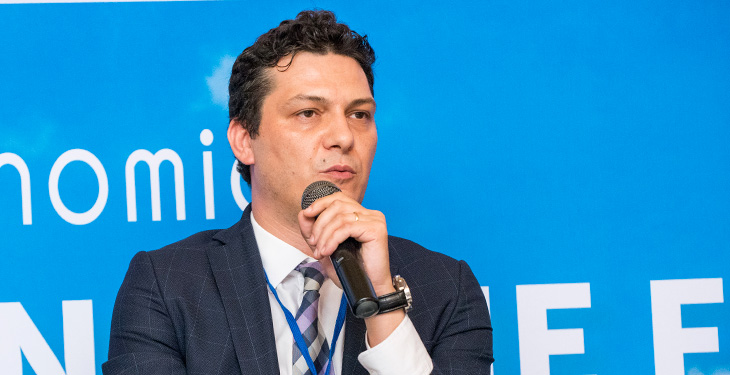Enevo is a technology company deeply involved in digitalization, said Cristian Pîrvulescu, CEO Enevo Group, at the 2019 Energy Strategy Summit, an event organized by energynomics.ro.
“I represent a company that is directly related to technology, especially on the digitalization side, an area that is clearly the easiest to talk about when it comes to new energy technologies. We work in the area of command, control, protection, process automation and so on, right now, in seven countries around the world, using the technology of major producers, as technology integrators. There is a fundamental difference between developing technology and adopting technology,” believes Pîrvulescu.
When it comes to adopting energy technologies, the context of the sector, of the inertia with which the projects are taking place must be taken into account.
“The energy field is characterized by a very high inertia – very long project implementation times and very long life spans of the implemented projects. Often, when talking about the digitalization area, we had our own experience to implement projects based on a task book, and by the end of the process we already saw emerging two series of new generations of the same equipment or platforms that served the same type of process. That’s why, when it comes to digitalization in particular, we mostly talk about optimizations.”
In Romania, but also in other countries, there are energy systems thought in the 1960s, designed in the 1970s, put into operation in the 1980s, operated by 2010, according to the same principles.
“The first transformation was the adoption of renewable energy at the system scale, which came with a different dynamic in terms of operation and exploitation of energy systems. Over the last 50 years, energy and environment technologies have also been adopted. We are not just talking about power generation, but also about other means of generation. When talking about digitalization, technology is available. The big vendors have gone a long way, we can measure everything, we can get stunning computing speeds. We each have in our mobile phone more technology than the one used to lead the first man in space, as somebody said. But economic opportunities move from the IT development area to applications – here will be real business opportunities in the next 50 years, where we will change IT to that sector defined by Thomas L. Friedman as renewable environmental technologies. These will change everything, we will have hydrogen, storage, among others. The structure of generation, operating systems, everything from
transport to industry will change,” said Pîrvulescu.
Technological development is encouraged by investment. It is based on a need, a real demand with economic and financial reasoning.
“It is very difficult to talk about technological development when taking the lowest price as a criterion. We do not necessarily speak of quality and sustainability in that case. Then technological development involves a tactical field. I am referring to available and prepared human resources that are found in other realities than those we were accustomed to. It is not necessarily the university that leads the technological development, but the industry pushes for and encourages it. There is also a need for a tactical field for testing new technologies. And we have to talk about new economic models,” Pîrvulescu concluded.

